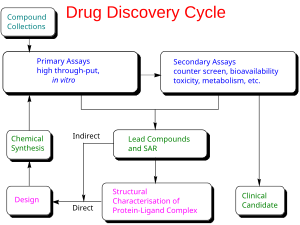The following graphics were compiled by The Visual Capitalist. It's one of my favourite sites.
Visual Capitalist TSC Venture Exchange from 1990 to Present
The massive decline in resource-based stocks, the life blood of the exchange, has disenchanted investors and other players. This is typical:
http://business.financialpost.com/news/energy/revitalizing-the-tsx-venture-has-high-priority-in-2016-for-broken-exchange?__lsa=53fe-91ae
A Falling Tide Lowers All Boats ... the captains are hapless victims
Over the past 3 years, many resource-based funds, especially those focused on precious metals and oil and gas, have recorded tremendous losses. Out of curiosity, I checked the credentials and performance records of the account managers who helm many of these funds. Here are a few findings:
- all of them were well educated with backgrounds in the areas of business, economics and engineering
- all had the requisite professional certifications
- most had been in the business for more than a decade and most had recorded impressive portfolio performances during the height of the resources bubble
This notwithstanding, their performances in recent years have been dismal in real terms - the result of constraints imposed by the investment parameters of their funds. It's almost as if they are locked on auto pilot, unable to change course in the face of the shoals ahead. In other words, they have little option but to soldier on, go to cash, or close their funds.
Fund managers have little choice but to be optimistic as it is not in their career interest to discourage bruised investors:
The energy sector has been a challenging place for investors for several years now and many investors’ patience levels are being tested (to the extreme!). This has been the worst oil price correction in nearly 45 years and the pain inflicted has been significant. The greatest risk today is not in being invested in energy stocks but rather in buying into the fear of today, every time an economist tries to steal headlines with the lowest possible short-term prediction for the oil price (we are almost at the point where the next prediction will be for a negative oil price). ... The only thing missing now is a bit more patience and a few more months to get through the worst period of refining activity and the resumption of Iranian production. After that, investors should focus on inventory withdrawals and the rebalancing of the market. It is at that point when the price of oil should begin its recovery and oil stocks along with it.
http://sprott.com/media/318873/sprott-energy-fund-monthly-commentary.pdf
Periodic Table of Investment Returns
The following table chronicles the rise and fall of investment tides in various sectors.
Periodic Table of Sector Returns 2006 to 2015
The periodic table has been used by many to extoll the virtues of diversification.
I take a different view.
- Diversification for its own sake is fine if your goal is to achieve returns which approximate general market indices, in which case, your best option is to purchase various market index ETFs.
- There are some long-term trends which, in my opinion, favour certain sectors over others in terms of providing opportunities for financial gain. For example, an aging population in wealthy countries will only increase the demand for products and services in health care. Growing affluence and rapidly expanding populations in many parts of the world, coupled with the disruptions of climate change, have created ideal conditions for long-term investments in agriculture. Infrastructure is another theme: renewal and new build.
- Most important, the foundation of my portfolios is comprised of companies with excellent management, stellar balance sheets and competitive business models. Diversification for its own sake is a non-starter.
The following paper provides a concise and thoughtful overview of a sector-based approach to portfolio construction.
Equity Sectors: Essential Building Blocks for Portfolio Construction
The takeaways:
- Applying a sector-based framework to equity portfolio construction can help investors achieve a variety of alpha-seeking investment objectives and greater control in managing portfolio risk.
- Beyond company-specific factors, sector exposure has been the most influential driver of equity market returns, yet sector-based portfolio construction remains an under-utilized strategy in the marketplace.
- Equity sectors have a variety of attributes, including stable classification, consistent earnings drivers, high return differentiation, clear volatility patterns, and low correlations, which together can help investors generate efficient portfolios
- Sectors can be used as portfolio construction building blocks through a variety of investment strategies, including sector allocation, portfolio overlays, portfolio completion, and risk management, as well as to diversify wealth beyond human capital exposures.
I have watched the rise and demise of many investment strategies and concluded that the following approach suits my temperament:
- emphasis on sectors with the potential to generate substantial gains over the long-term
- periodic speculative investments in small companies with products/services with the potential for significant gains
- and always, a focus on companies with excellent management, great balance sheets and a competitive position
It is very much an "active" approach - one which demands constant learning and forays into unfamiliar ground, especially when investing in small innovative companies. It also entails a mindset able to sustain heart-stopping losses when the market sentiment of the moment is negative e.g. fear has driven down prices in sectors such as agriculture, seemingly ignoring some very compelling long-term considerations which favour future prospects for financial gain.
This approach is not suitable for everyone, nor should it be. As my father-in-law used to say, "That's why they make Fords and Chevs."


